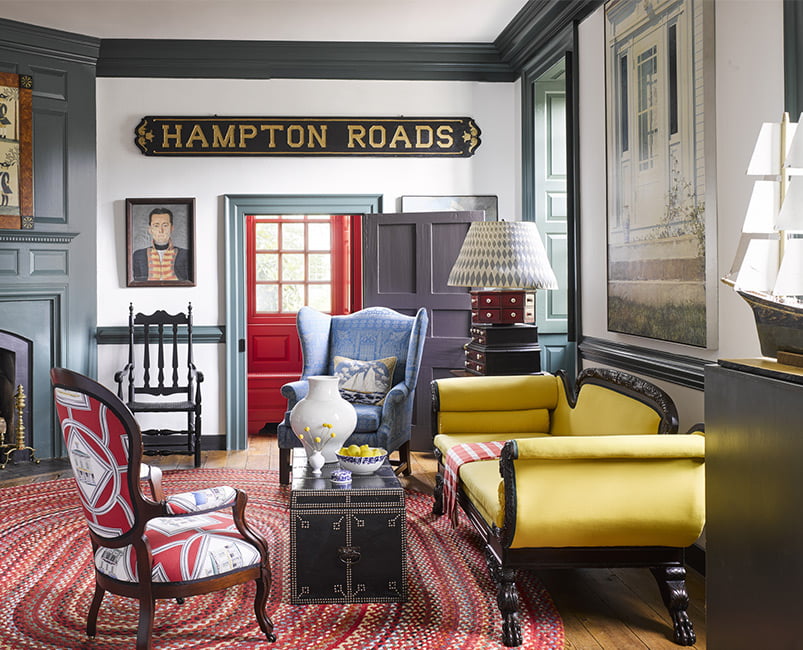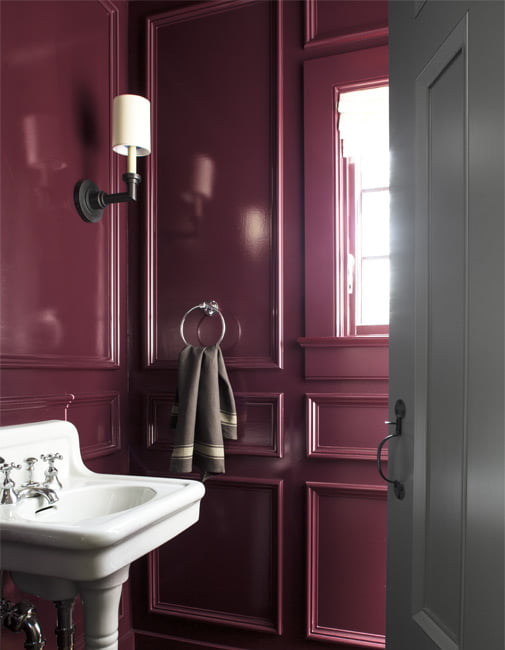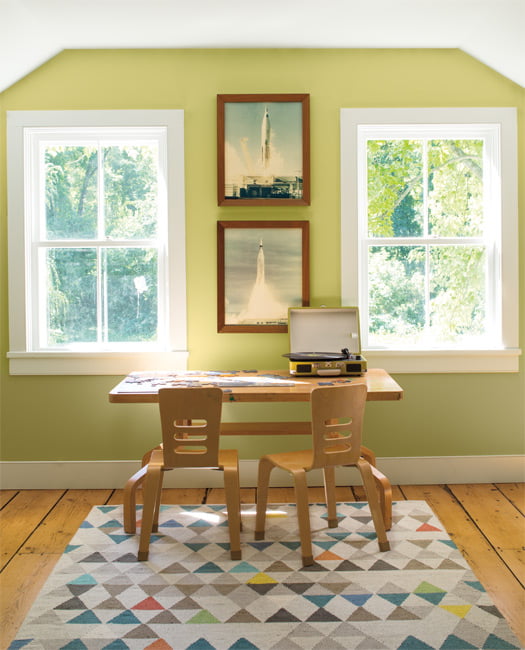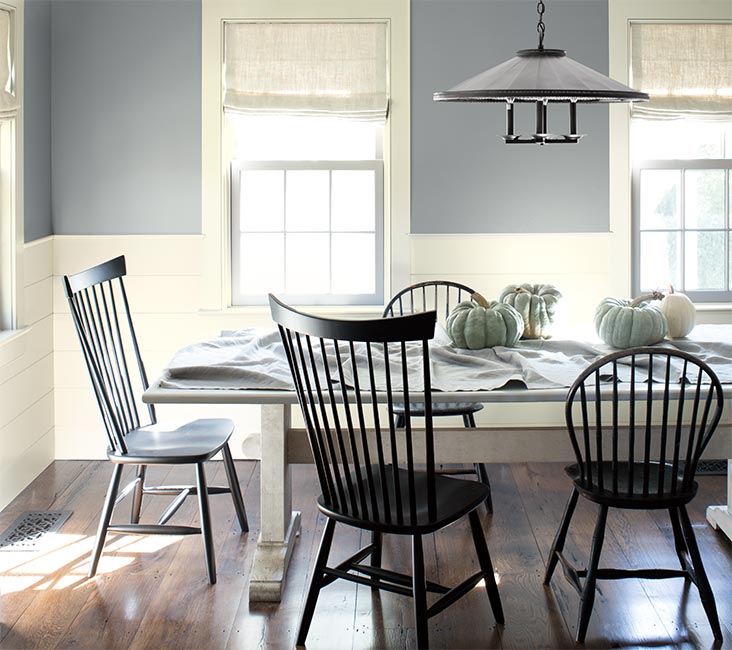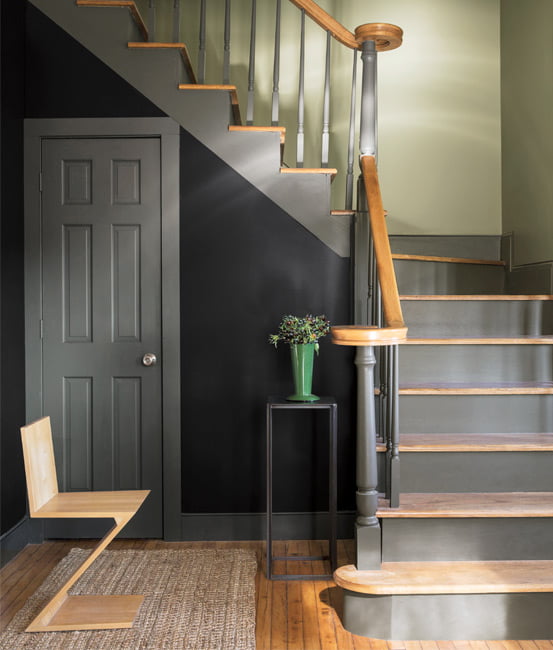The Williamsburg® Paint Collection fuses traditional and modern design, transporting paint colors from the past to enhance contemporary living.
To merge authentic, early American design history with Benjamin Moore paint colors, we collaborated with The Colonial Williamsburg Foundation. Our shared dedication to understanding the 18th and early 19th centuries’ rich color pigments led us to curate the 144-color Williamsburg® Paint Color Collection and bring timeless beauty to your home.
Classic Beauty
The Williamsburg® Paint Color Collection recreates the colors that defined the early years of our nation.
These distinctive colors still influence design today with their array of vibrant hues, rich shades and classic neutrals. Whether you live in a colonial-style home or use this timeless palette to complement modern architecture and furnishings, the Williamsburg® Paint Color Collection never goes out of style.
An Enduring Palette
All of the 144 colors in the Williamsburg® Paint Color Collection can be found exclusively at Benjamin Moore retailers.
Meet Anthony Baratta, Designer in Residence
Traditional paint colors come to brilliant life at The Palmer House (circa 1750) under the deft skills of celebrated interior designer Anthony Baratta in Colonial Williamsburg.
Anthony applies his fresh take on Americana in both furnishings and décor, using a broad range of rich paint colors from the Williamsburg® Paint Color Collection palette.
Historically accurate yet highly relevant to modern day design, the results are as gorgeous as they are inviting.
Brilliant Paint Color x Colonial Living
The living room paint colors as a whole, seen here, are a “colonial interpretation of a primary palette” according to the artist. Williamsburg Paint colors include Goodwin Green CW-555, Mopboard Black CW-680 and Harwood Putty CW-5.
In the lively dining room, he features Damask Gold CW-405 and Lafayette Blue CW-610.
Custis Salmon CW-215 graces the guest room, described by the artist as a “beautiful, luscious” feminine color choice.
Anthony’s favorite Williamsburg paint color? Ambler Slate CW-685, a deep gray paint inspired by a shade found in 18th and early 19th century wallpapers.
A Vivid Past
Research led to the development of deeply saturated paint colors not typically associated with colonial America. Why? New technologies uncovered evidence that historic pigments were more saturated than originally thought. From there, Benjamin Moore chemists—working with The Colonial Williamsburg Foundation—calculated precise formulas to match the original, authentic colors.
A stunning example of the depth of color unearthed by Colonial Williamsburg research is seen here in this powder room, painted in Carter Plum CW-355.
Rich Color That Stays True Over Time
Aura’s proprietary Color Lock® technology enhances Aura Color Stories further: With its ability to microscopically bond color pigments to dry paint film, color doesn’t fade, even after repeated washing. Other premium quality performance attributes of Aura Interior paint include…
- Brilliant, everlasting color
- Rich, thick paint that provides a
- Beautiful, smooth finish
- Extreme hide to cover dark colors and imperfections
- Low VOC
Welcome Williamsburg to Your Home
Bring the Williamsburg® Paint Color Collection to the interior or exterior of your home with Aura®, Regal® Select, Natura®, ADVANCE® and other premium Benjamin Moore products: ask your local retailer for the product that’s right for your project.
You’ll find the Williamsburg® Paint Color Collection at independently owned paint, decorating and hardware stores.
“WILLIAMSBURG IS A TIMELESS PALETTE THAT IS BOTH HISTORIC AND DISTINCTLY MODERN.”
Historically Accurate
Together with preservationists at the The Colonial Williamsburg Foundation, Benjamin Moore’s chemists and color experts examined 18th-century wallpaper, original paint samples and historical documents to accurately recreate colors found in early American design.
Bassett Hall Green CW-480, shown on the walls of this stairwell, with risers in Geddy Gray CW-720, reflect how the traditional paint colors of the Williamsburg® Paint Color Collection can combine distinct colors for a fresh and sophisticated look.
—Felicity Keane
CREATIVE DIRECTOR, BENJAMIN MOORE
Classic Beauty
The Williamsburg® Paint Color Collection recreates the colors that defined the early years of our nation.
These distinctive colors still influence design today with their array of vibrant hues, rich shades and classic neutrals. Whether you live in a colonial-style home or use this timeless palette to complement modern architecture and furnishings, the Williamsburg® Paint Color Collection never goes out of style.
An Enduring Palette
All of the 144 colors in the Williamsburg® Paint Color Collection can be found exclusively at Benjamin Moore retailers.
Meet Anthony Baratta, Designer in Residence
Traditional paint colors come to brilliant life at The Palmer House (circa 1750) under the deft skills of celebrated interior designer Anthony Baratta in Colonial Williamsburg.
Anthony applies his fresh take on Americana in both furnishings and décor, using a broad range of rich paint colors from the Williamsburg® Paint Color Collection palette.
Historically accurate yet highly relevant to modern day design, the results are as gorgeous as they are inviting.
Brilliant Paint Color x Colonial Living
The living room paint colors as a whole, seen here, are a “colonial interpretation of a primary palette” according to the artist. Williamsburg Paint colors include Goodwin Green CW-555, Mopboard Black CW-680 and Harwood Putty CW-5.
In the lively dining room, he features Damask Gold CW-405 and Lafayette Blue CW-610.
Custis Salmon CW-215 graces the guest room, described by the artist as a “beautiful, luscious” feminine color choice.
Anthony’s favorite Williamsburg paint color? Ambler Slate CW-685, a deep gray paint inspired by a shade found in 18th and early 19th century wallpapers.
A Vivid Past
Research led to the development of deeply saturated paint colors not typically associated with colonial America. Why? New technologies uncovered evidence that historic pigments were more saturated than originally thought. From there, Benjamin Moore chemists—working with The Colonial Williamsburg Foundation—calculated precise formulas to match the original, authentic colors.
A stunning example of the depth of color unearthed by Colonial Williamsburg research is seen here in this powder room, painted in Carter Plum CW-355.
Rich Color That Stays True Over Time
Aura’s proprietary Color Lock® technology enhances Aura Color Stories further: With its ability to microscopically bond color pigments to dry paint film, color doesn’t fade, even after repeated washing. Other premium quality performance attributes of Aura Interior paint include…
- Brilliant, everlasting color
- Rich, thick paint that provides a
- Beautiful, smooth finish
- Extreme hide to cover imperfections
- Low VOC
Welcome Williamsburg to Your Home
Bring the Williamsburg® Paint Color Collection to the interior or exterior of your home with Aura®, Regal® Select, Natura®, ADVANCE® and other premium Benjamin Moore products: ask your local retailer for the product that’s right for your project.
You’ll find the Williamsburg® Paint Color Collection at independently owned paint, decorating and hardware stores.
“WILLIAMSBURG IS A TIMELESS PALETTE THAT IS BOTH HISTORIC AND DISTINCTLY MODERN.”
Historically Accurate
Together with preservationists at the The Colonial Williamsburg Foundation, Benjamin Moore’s chemists and color experts examined 18th-century wallpaper, original paint samples and historical documents to accurately recreate colors found in early American design.
Bassett Hall Green CW-480, shown on the walls of this stairwell, with risers in Geddy Gray CW-720, reflect how the traditional paint colors of the Williamsburg® Paint Color Collection can combine distinct colors for a fresh and sophisticated look.
—Felicity Keane
CREATIVE DIRECTOR, BENJAMIN MOORE
Questions?
we're here for you.
Frequently Asked Questions
When touching up a hole repair, why do I notice a difference, why is the color different?
Paint ages and loses sheen over time, so even within 3 months of painting, the wall is now less shiny than the touch up, meaning it will stand out more. In time the touch up will dull down and blend in a little, but the touchup must be applied lightly in order to keep the wall looking as close to uniform as possible.
Should I do two coats?
You should always do two coats for the following reasons:
-Uniform color - if you only do one coat there is no guarantee that the color will be uniform if the previous color is showing through due to improper film build.
-When doing a color change you should definitely not rely on one coat, depending on what you’re changing to, 2 coats is usually enough.
Do I need to prime?
Priming is necessary when you have new drywall/drywall mud to seal it so that it doesn’t absorb more paint than is needed. Also if doing a color change from dark to light 1 coat of primer might be recommended in order to achieve the desired color.
Why do I need to wait for the paint to dry?
The re-coat window is necessary to ensure that your 2nd coat doesn’t re-wet the first coat. Applying paint too early can just re-activate the previously applied coat of paint, meaning that you don’t get a proper two coat film build, and so it doesn’t cover as two proper coats.
How long do I wait to be able to wash my walls
Most paints require 28 days to full harden and cure, giving you maximum durability for the product. only ever wash your walls with warm soapy water, avoiding bleach or ammonia based cleaning products.







